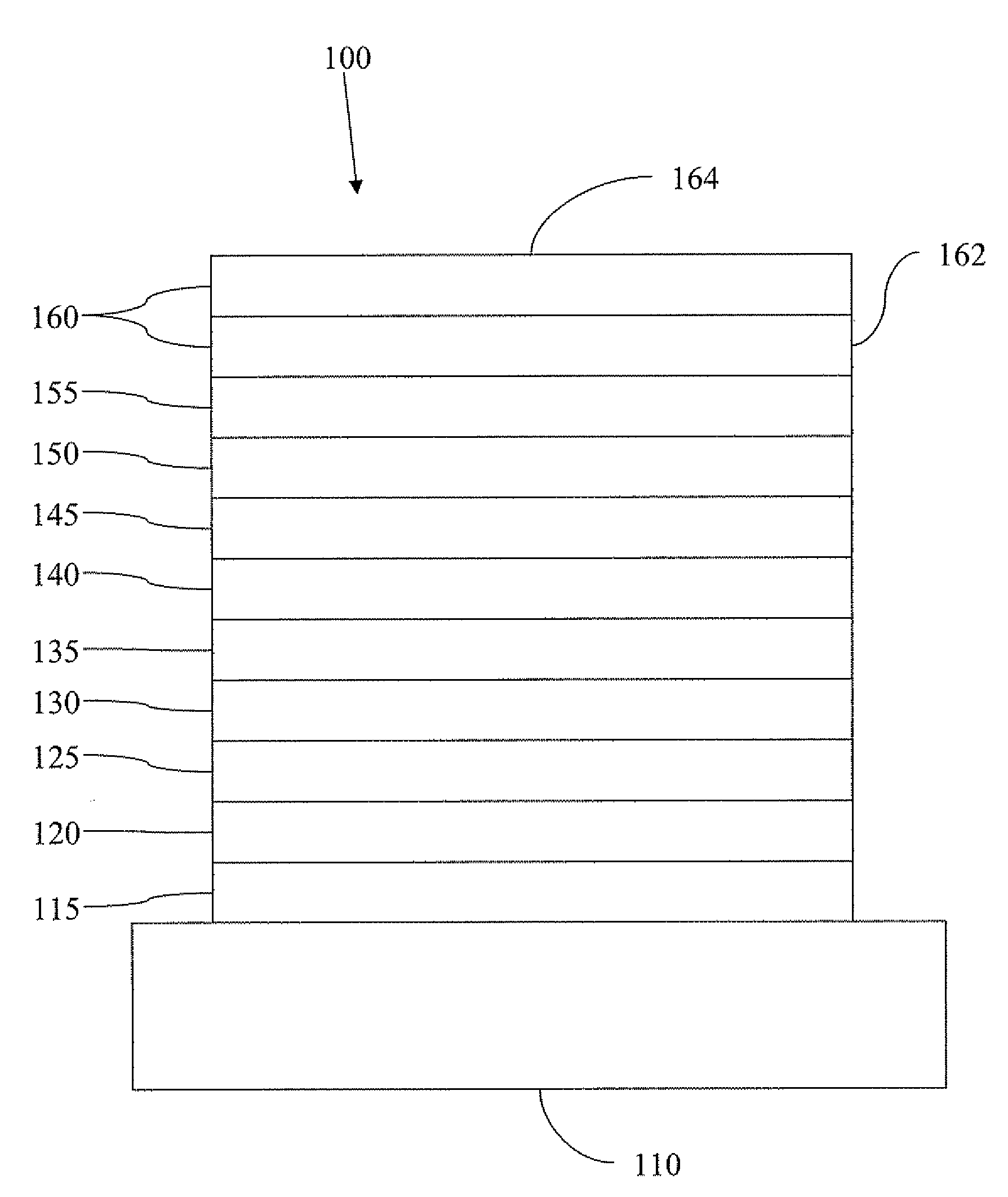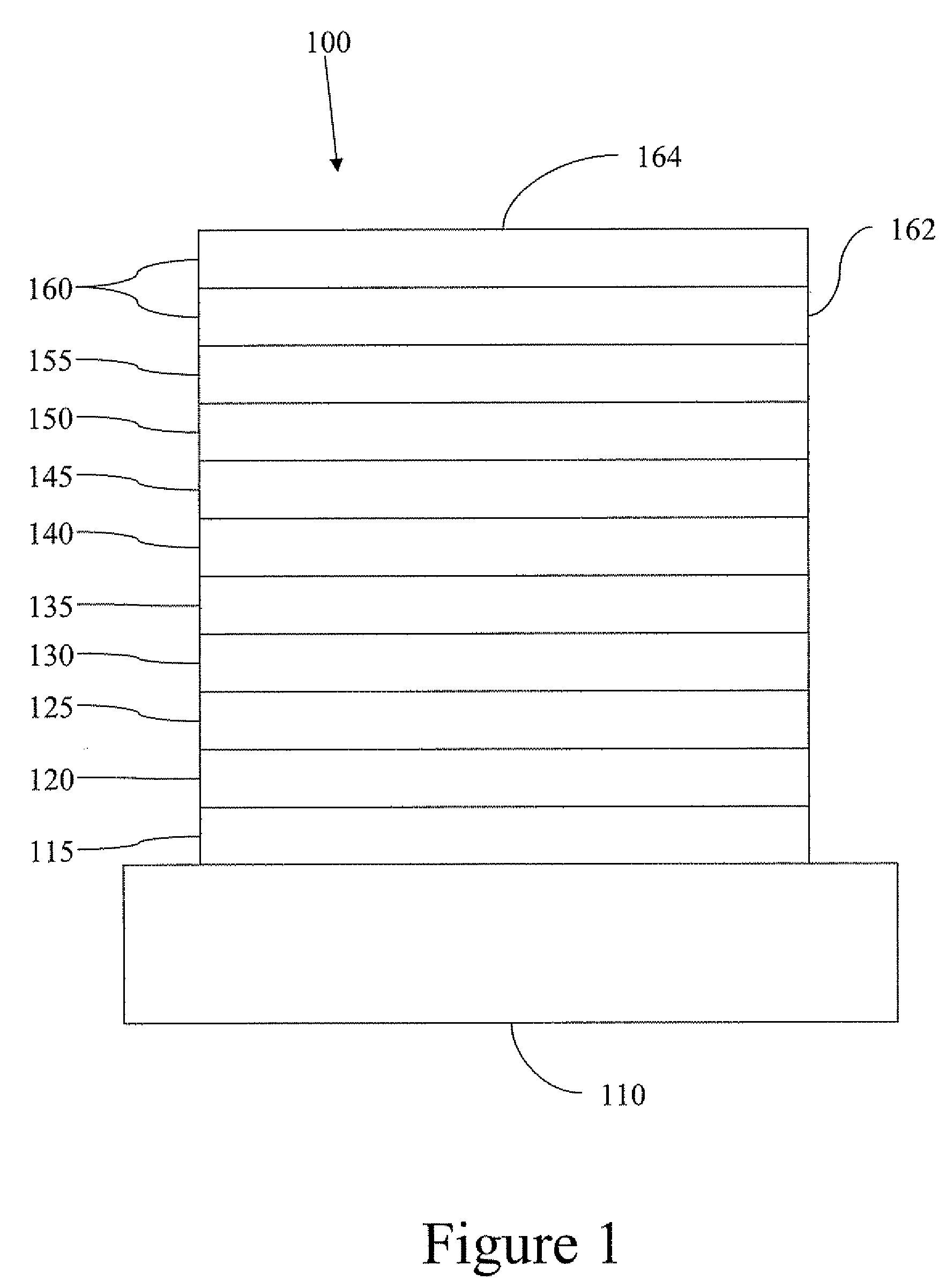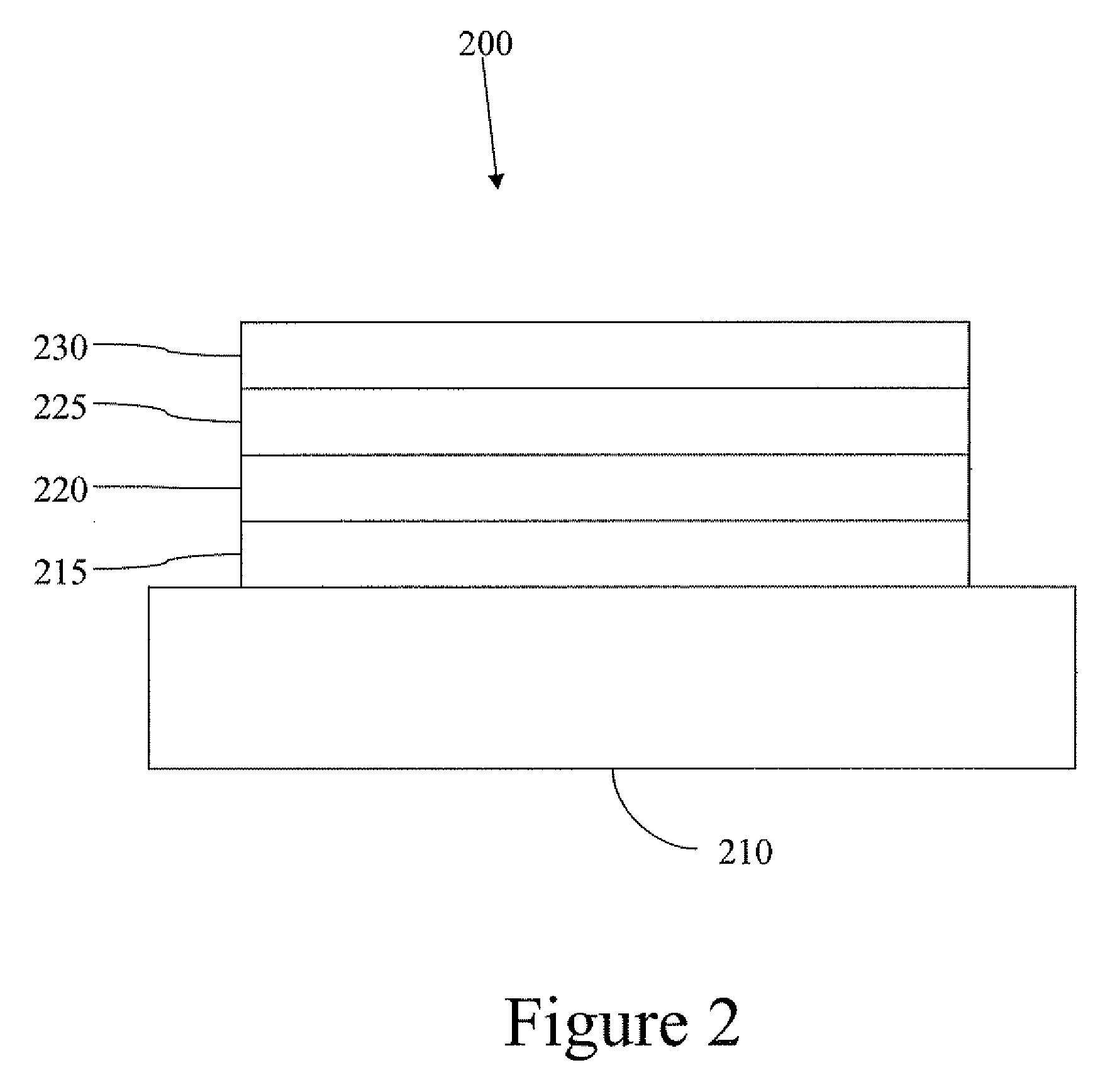Complexes with tridentate ligands
a tridentate ligand and complex technology, applied in the direction of osmonium organic compounds, discharge tubes luminescnet screens, cadmium organic compounds, etc., can solve the problems of not being sufficiently stable for commercial devices and well known applications of carbene ligands in photochemistry
- Summary
- Abstract
- Description
- Claims
- Application Information
AI Technical Summary
Problems solved by technology
Method used
Image
Examples
example 2
Synthesis Osmium Carbene Complex OS2
Step 1
[0215]
[0216]To a Solution of CuBr2 (26.8 g, 120 mmole) in anhydrous acetonitrile (500 ml) at 0° C. was added t-butyl nitrite (21.1 ml, 160 mmole) dropwise, and then 3-amino-5-bromobenzotrifluoride (25 g, 104.1 mmole) was added dropwise. The mixture was stirred at 0° C. for 1.5 h, then at room temperature for 16 h. The mixture was then concentrated to half of its original volume in vacuo, and then poured into 1 N HCl (620 ml). This mixture was extracted with ether (400 ml). The organic layer was washed with 1N HCl, dried (Na2SO4), filtered, and concentrated in vacuo. The residue was purified by flash column chromatography on silica gel using hexanes as the eluent and 18.33 g of OS 2-A was obtained. (57.8%)
Step 2
[0217]
[0218]A 1000 mL round bottom flask was charged with 13.33 g of compound OS2-A, 12.43 g of benzimidazole, 1.668 g of copper (I) iodide, 3.15 g of 1,10-phenanthroline, 59.93 g of cesium carbonate, and 500 ml of N,N-dimethylformamid...
example 3
Synthesis of es-4
[0224]A one neck 100 mL round bottom flask was charged with 15 g of 2,3 diaminonaphthalene and 30 ml of 99% formic acid. The mixture was heated to reflux for 3 hours. The mixture was extracted with ethyl acetate and water. The organic phase was discarded and the aqueous phase was neutralized with sodium hydroxide. The solid which formed was filtered and washed with water and isopropanol. The desired product was purified by vacuum distillation to yield 12 g of naphthamidazole as a white solid.
[0225]A three neck 500 mL round bottom flask was charged with 10 g of naphthamidazole, 8.9 g of 1,3-diiodobenzene, 0.56 g of copper (I) iodide, 17.2 g of potassium carbonate, 1.07 g of 1,10-phenathroline, and 200 mL of anhydrous N,N-dimethylformamide. The reaction mixture was heated to reflux under nitrogen for 18 hours. After cooling to room temperature the reaction was filtered. The solids were slurried in a water and isopropanol mixture. This mixture was then filtered and was...
example 4
Preparation of es-7
[0229]
Step 1
[0230]A three neck flask was charged with 3,5-dibromobenzonitrile (1 g, 3.86 mmol), N1-phenylbenzene-1,2-diamine (1.42 g, 7.72 mmol), Pd2(dba)3 (530 mg, 0.58 mmol), (2-biphenyl)di-t-butylphosphine, (345.5 mg, 1.158 mmol), sodium t-butoxide (1 g, 10.81 mmol) and anhydrous toluene (70 mL). The reaction mixture was stirred under nitrogen for 24 hrs in room temperature. The reaction mixture was cooled to 0 C by ice bath and a solution of 1M HCl (10.81 mL) in ether was added into reaction mixture. The reaction mixture was filtered and the precipitation was collected and used for next step without further purification.
Step 2
[0231]A 250 mL round bottom flask was charged with product from step 1 (1.8 g, 3.86 mmol), triethyl orthoformate (125 mL), conc. HCl (1 mL) and formic acid (several drops). The reaction was heated at 80 C for 16 h. The reaction mixture was concentrated under vacuum and the residue subjected to column chromatography (100% methylene chlorid...
PUM
| Property | Measurement | Unit |
|---|---|---|
| Structure | aaaaa | aaaaa |
| Emissivity | aaaaa | aaaaa |
Abstract
Description
Claims
Application Information
 Login to View More
Login to View More - R&D
- Intellectual Property
- Life Sciences
- Materials
- Tech Scout
- Unparalleled Data Quality
- Higher Quality Content
- 60% Fewer Hallucinations
Browse by: Latest US Patents, China's latest patents, Technical Efficacy Thesaurus, Application Domain, Technology Topic, Popular Technical Reports.
© 2025 PatSnap. All rights reserved.Legal|Privacy policy|Modern Slavery Act Transparency Statement|Sitemap|About US| Contact US: help@patsnap.com



